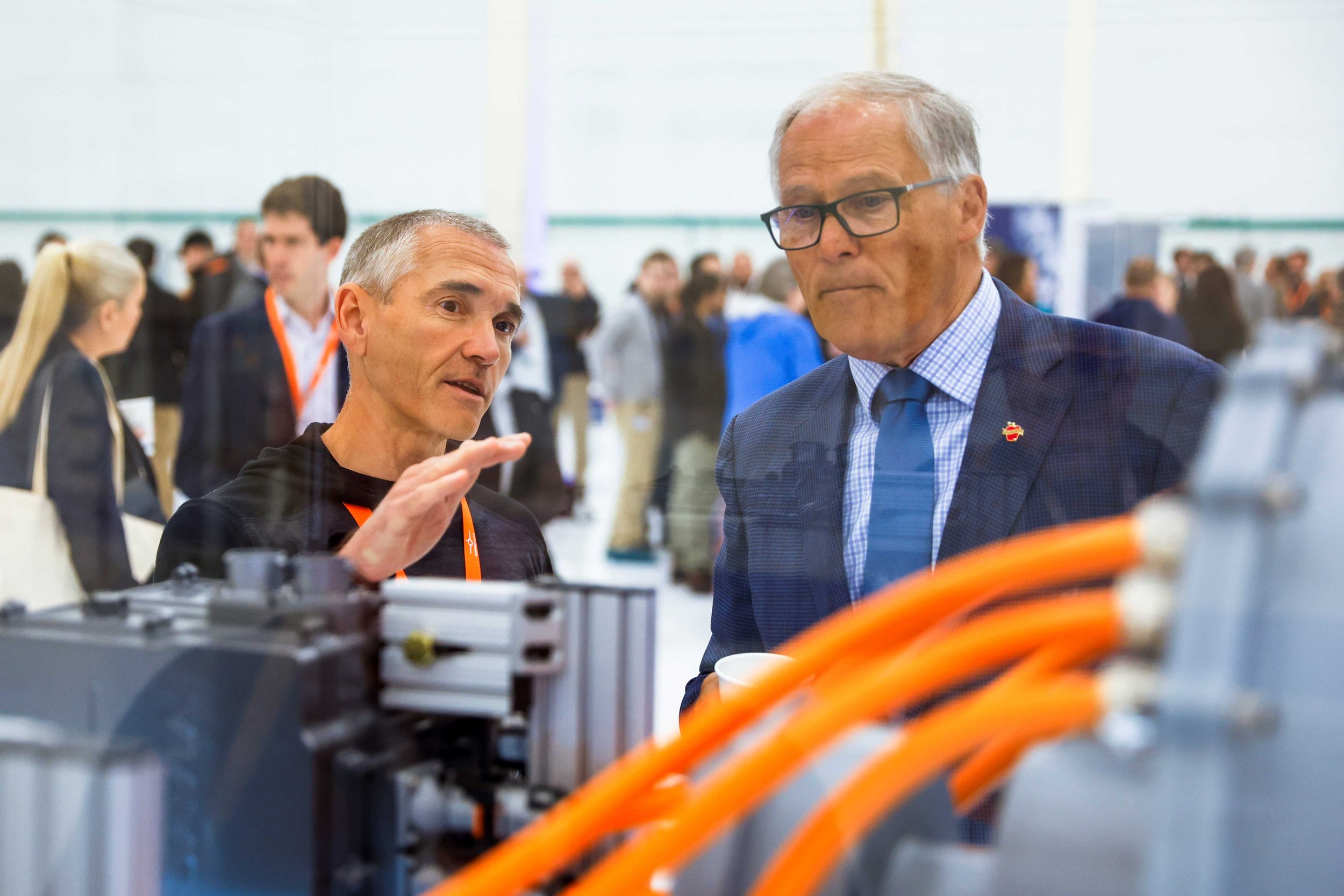Hydrogen-Electric Aviation Manufacturer Opens Expanded Facility At Paine Field Intending To Employ Hundreds Locally In The Years To Come.
ZeroAvia is known for innovation in clean aviation. Now, with its new 136,000-square-foot Propulsion Center of Excellence manufacturing facility at Paine Field, the company will produce hydrogen-electric propulsion systems for companies seeking to decarbonize. In April, Washington State officials, including Governor Jay Inslee and United States Representatives Suzan DelBene and Rick Larsen, cut the ribbon on the new facility, kicking off a new era of clean aviation.
With a previous footprint in the area and 50 employees locally, the new Center offers the opportunity to scale into what ZeroAvia CEO Val Miftakhov called, “a clean aerospace manufacturing powerhouse.” Governor Inslee stated, “The transition to clean fuels is not only necessary to turn the tide against climate change and its devastating health impacts, but it also secures Washington’s continued economic dynamism well into the future.”
ZeroAvia recognizes the problem—that aviation is the fastest-growing source of greenhouse gas emission–and offers a scalable, sensical solution: hydrogen and electric propulsion technology that will reduce environmental harm. ZeroAvia sees hydrogen-electric powertrains as “the only viable, scalable solution for zero-emission aviation.”
With over 2,000 preliminary orders for its propulsion systems, the company hopes to certify a propulsion system for an airplane with up to 20 seats and a 300-mile range next year. Larger planes and wider ranges are targeted for later in the decade.
Other initiatives nearby include the Sustainable Aviation Fuel Research and Development Center, a venture between Snohomish County and WSU that will open this year. The continued concentration of clean aerospace technology, research and development, industry and education helps position the area for continued growth and innovation. ZeroAvia also plans to open a Hydrogen Center of Excellence to support fuel cell system production.
